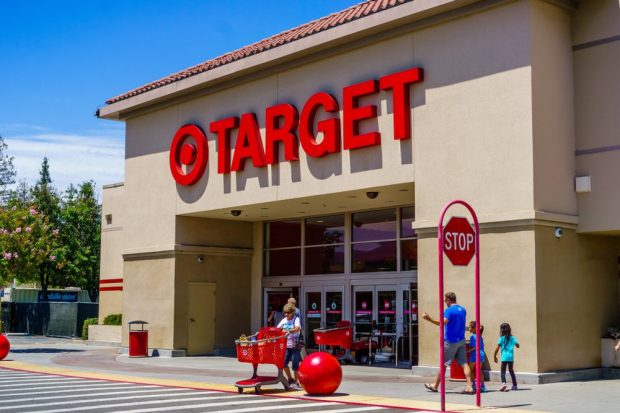Big Box Retailers Target and Walmart Woo Higher-Income Grocery Shoppers

In this week’s grocery roundup, superstores set their sights on big spenders, Grab grows its grocery presence, and supermarket spending is rising.
Mega-retailer Target discussed Wednesday (Nov. 16) on a call with investors about its third-quarter results that food spending is growing across income groups.
Christina Hennington, executive vice president and chief growth officer at Target, noted that, across demographics, one of the key “inflection points” in consumers’ engagement with the retailer is “the amount that they buy food and beverage.”
The company is also looking to drive discretionary spending in food categories by adding higher-quality products. For instance, the company recently announced a partnership with British retailer Marks & Spencer to offer “a limited-time assortment of gourmet premium food and chocolates,” Hennington said.
Target is not the only one looking to drive up grocery spending with those who have a bit of leeway in their budgets. Walmart, the world’s largest grocer, shared with analysts on a call Tuesday (Nov. 15) discussing its Q3 financial results that its efforts to attract higher-value food customers are paying off.
“We’ve continued to gain grocery market share from households across income demographics, with nearly three-quarters of the share gain coming from those exceeding $100,000 in annual income,” CFO John Rainey said.
High-income grocery shoppers are valuable for retailers because of how much they can spend per purchase and how often they make purchases. Research from PYMNTS’ study “Digital Economy Payments: Consumers Buy Into Food Bargains,” which drew from a July survey of nearly 2,700 U.S. consumers, finds that consumers who make over $100,000 were the most likely to purchase groceries more than 10 times in a month. Twelve percent reported doing so, compared to 9% of those who make $50,000-$100,000 and 6% of those who make less than $50,000.
Get the study: Digital Economy Payments: Consumers Buy Into Food Bargains
Grab Grows Its Grocery Presence
Singapore-based super app Grab, which operates in 480 cities across eight Southeast Asian countries, is looking to expand its grocery offerings to drive adoption across its markets, as executives shared on a call with analysts Wednesday discussing the company’s third quarter financial results.
“For non-food deliveries, we are building a portfolio approach towards our grocery segment,” Grab CEO and Co-founder Anthony Tan said. “In some markets like Malaysia, where we found a fit with our acquisition of Jaya Grocer, we can offer an end-to-end grocery retail experience within our app. In other markets, we are exploring partnerships.”
He cited the example of the company’s partnership with Trans Retail, a major grocer in Indonesia. Additionally, CFO Peter Oey stated that the company is “bullish” on its grocery efforts.
For super apps, grocery can be a key way to make their offerings more central to users’ lives, considering that grocery shopping is one of the most common digital activities, according to research from “Super Apps For The Super Connected,” a PYMNTS and PayPal collaboration. The study of nearly 10,000 consumers across four countries finds that the average millennial engages in 6.9 digital activities per month, the most common being grocery shopping, ordering from restaurants and tracking their vitals using health applications.
Grocery Spending Is on the Rise, but Inflation Wins Out
Commerce Department data released Wednesday reveals that, in October, year-to-date spending at grocery stores rose 8% year over year, totaling $698 billion. Adjusted figures for the month totaled $73 million, which also marks an 8% increase relative to 2021.
Notably, the adjusted figures do not take inflation into account. With grocery prices up 12%, according to the latest U.S. Bureau of Labor Statistics figures, it would seem that consumers are buying fewer or lower-quality groceries, despite the rise in the flat dollar amount spent.
